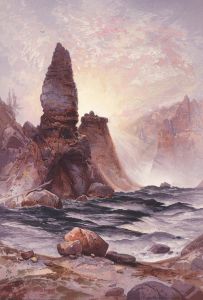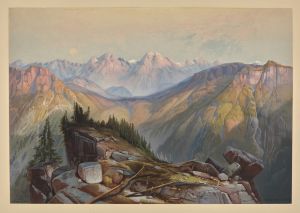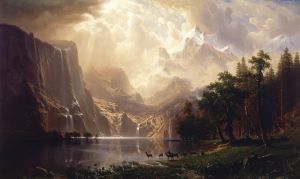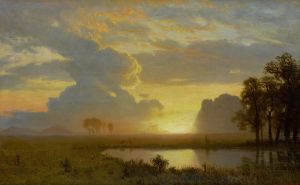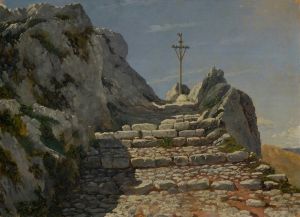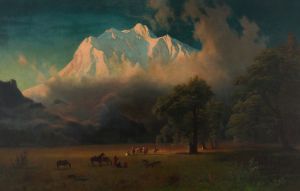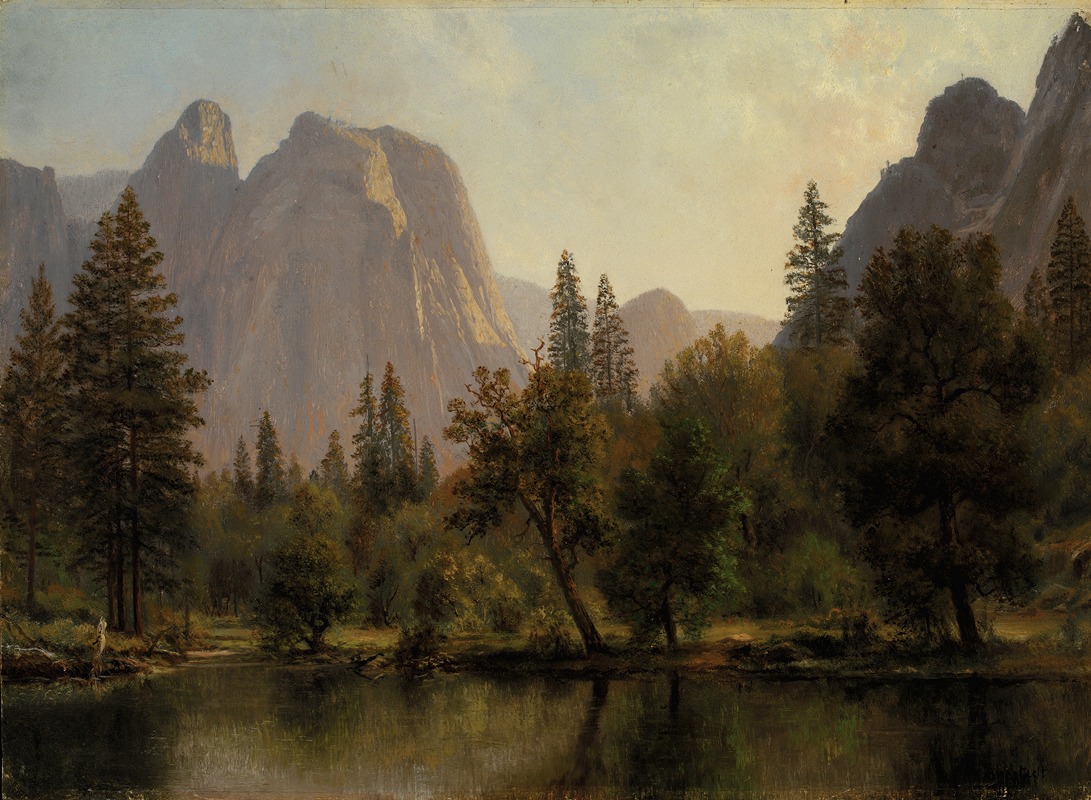
Cathedral Rocks, Yosemite Valley
A hand-painted replica of Albert Bierstadt’s masterpiece Cathedral Rocks, Yosemite Valley, meticulously crafted by professional artists to capture the true essence of the original. Each piece is created with museum-quality canvas and rare mineral pigments, carefully painted by experienced artists with delicate brushstrokes and rich, layered colors to perfectly recreate the texture of the original artwork. Unlike machine-printed reproductions, this hand-painted version brings the painting to life, infused with the artist’s emotions and skill in every stroke. Whether for personal collection or home decoration, it instantly elevates the artistic atmosphere of any space.
"Cathedral Rocks, Yosemite Valley" is a painting by the renowned German-American artist Albert Bierstadt, who is best known for his large-scale landscapes of the American West. Bierstadt was a prominent figure in the Hudson River School, a mid-19th century American art movement characterized by its realistic and detailed portrayal of nature, often imbued with romanticism and grandeur.
Albert Bierstadt was born on January 7, 1830, in Solingen, Germany, and emigrated with his family to the United States in 1831. He developed an early interest in art and eventually studied painting in Düsseldorf, Germany, where he was influenced by the Düsseldorf school of painting. Upon returning to the United States, Bierstadt became fascinated with the American West, which was relatively unknown to many Americans at the time.
"Cathedral Rocks, Yosemite Valley" is one of Bierstadt's many works that depict the majestic landscapes of the Yosemite Valley in California. The painting captures the grandeur of Cathedral Rocks, a prominent rock formation in the valley. Bierstadt first visited Yosemite in 1863, during a period when the valley was gaining attention for its stunning natural beauty. His journey to Yosemite was part of a larger expedition with writer Fitz Hugh Ludlow, whose accounts of the trip helped to popularize the region.
The painting showcases Bierstadt's signature style, characterized by meticulous attention to detail, dramatic lighting, and a sense of awe-inspiring scale. In "Cathedral Rocks, Yosemite Valley," Bierstadt employs a luminous palette to highlight the interplay of light and shadow on the rock formations, creating a sense of depth and realism. The composition is carefully balanced, with the towering Cathedral Rocks dominating the scene, while the surrounding landscape, including trees and a serene river, adds to the overall harmony of the piece.
Bierstadt's works, including "Cathedral Rocks, Yosemite Valley," played a significant role in shaping the perception of the American West during the 19th century. His paintings were instrumental in promoting the idea of the West as a land of untamed beauty and vast potential. They also contributed to the growing movement to preserve natural landscapes, which eventually led to the establishment of national parks, including Yosemite National Park in 1890.
"Cathedral Rocks, Yosemite Valley" reflects Bierstadt's ability to capture the sublime beauty of nature and his dedication to portraying the American landscape with both accuracy and artistic flair. The painting remains an important example of 19th-century American landscape art and continues to be admired for its technical skill and evocative power.
Albert Bierstadt's legacy as an artist is closely tied to his depictions of the American West, and "Cathedral Rocks, Yosemite Valley" is a testament to his talent and vision. The painting is part of the rich cultural heritage that celebrates the natural wonders of the United States and serves as a reminder of the enduring allure of the American wilderness.






